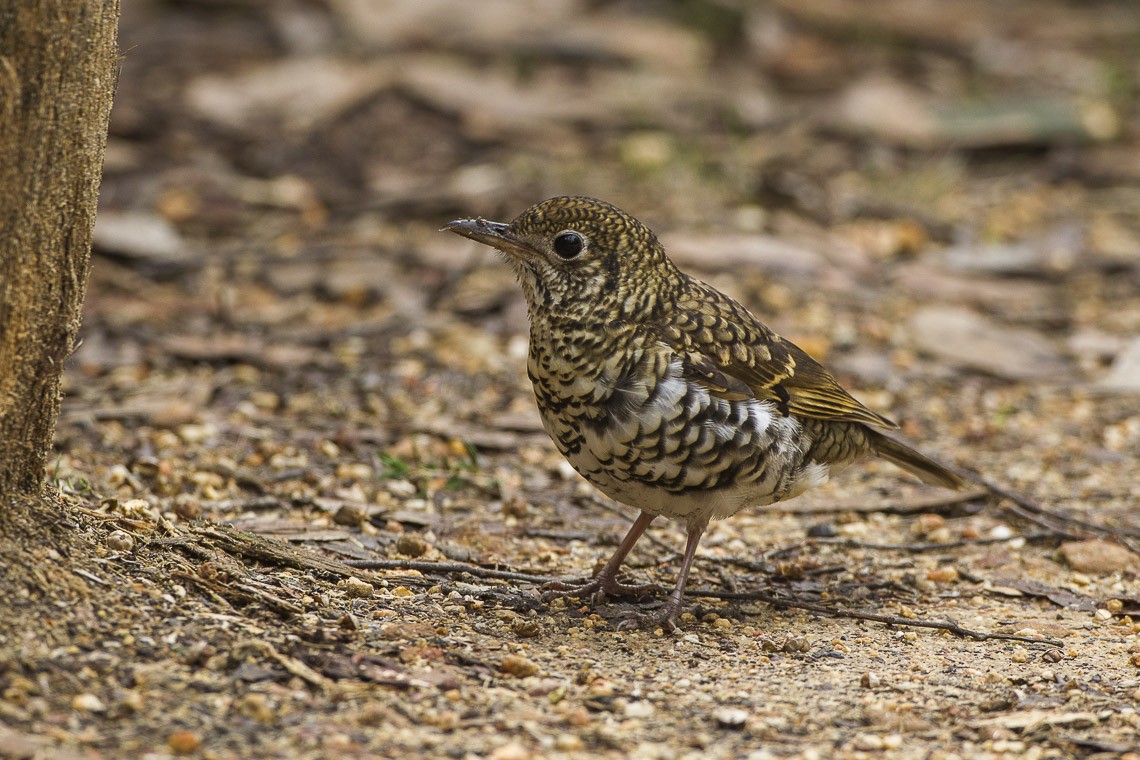Bassian Thrush
A species of Scaly Thrushes and Allies Scientific name : Zoothera lunulata Genus : Scaly Thrushes and Allies
Bassian Thrush, A species of Scaly Thrushes and Allies
Botanical name: Zoothera lunulata
Genus: Scaly Thrushes and Allies
Content
Description General Info
 Photo By Francesco Veronesi , used under CC-BY-SA-2.0 /Cropped and compressed from original
Photo By Francesco Veronesi , used under CC-BY-SA-2.0 /Cropped and compressed from original Description
The Bassian thrush (Zoothera lunulata), also known as the olive-tailed thrush, is a medium-sized mostly insectivorous thrush found from northern Queensland to southeastern Australia; it also occurs in Tasmania, on some larger islands of Bass Strait, and on Kangaroo Island. The thrushes range from 27 to 29 cm (10.5 to 11.5 in) in length and average 100 g (3.5 oz). It is estimated that the rangewide population is large, though no official count has ever been established. The Bassian thrush lives in shrubland, forests, and rainforests. It appears to be a resident species, but there is some evidence that some individuals have nomadic tendencies, usually in the non-breeding season. Though affected by human destruction of its natural habitats, its range is so large that the impact is negligible. The thrush ranges in color from brown to an olive color, with a white ring around its eyes and black bars on its back, rear, and head. Its underbody is paler, with dark scalloping, and its wings have a dark bar running the length of the underside. Nesting begins in the winter months (from late June) and continues till the end of summer. The two or three eggs which form a clutch vary from pale green or blue to light stone. The cup-shaped nest is usually built of strips of bark, at times mixed with leaves, and is lined with grasses and rootlets. Sites vary from a few feet to 50 feet from ground. A fork in the tree is usually favoured, but the nest may be placed on the stump, or a ledge in a cave. Bassian thrush are known to dislodge their prey out of pile of leaves by disturbing the leaf litter. The birds move quietly, but often pause, to listen for the movements of the insects. They also disturb worm prey by farting, which provokes the worms to move. 
Size
29 cm
Colors
Brown
Black
Gray
White
Nest Placement
Ground
Feeding Habits
Bassian Thrush forages on the forest floor, primarily consuming insects, earthworms, and molluscs. It occasionally supplements its diet with fruits. Employing a 'freeze and lunge' technique, bassian Thrush detects prey by disturbances in the leaf litter.
Habitat
Bassian Thrush thrives in cool, damp forests with dense canopy and moist leaf litter, preferring environments with heavy annual rainfall over 800 mm. Commonly residing in elevated areas above 500 meters, this species adapts to both native and plantation forests, and also to damp eucalypt forests near creeks and dunes.
Dite type
Omnivorous
General Info
Feeding Habits
Bird food type
Species Status
Not globally threatened.